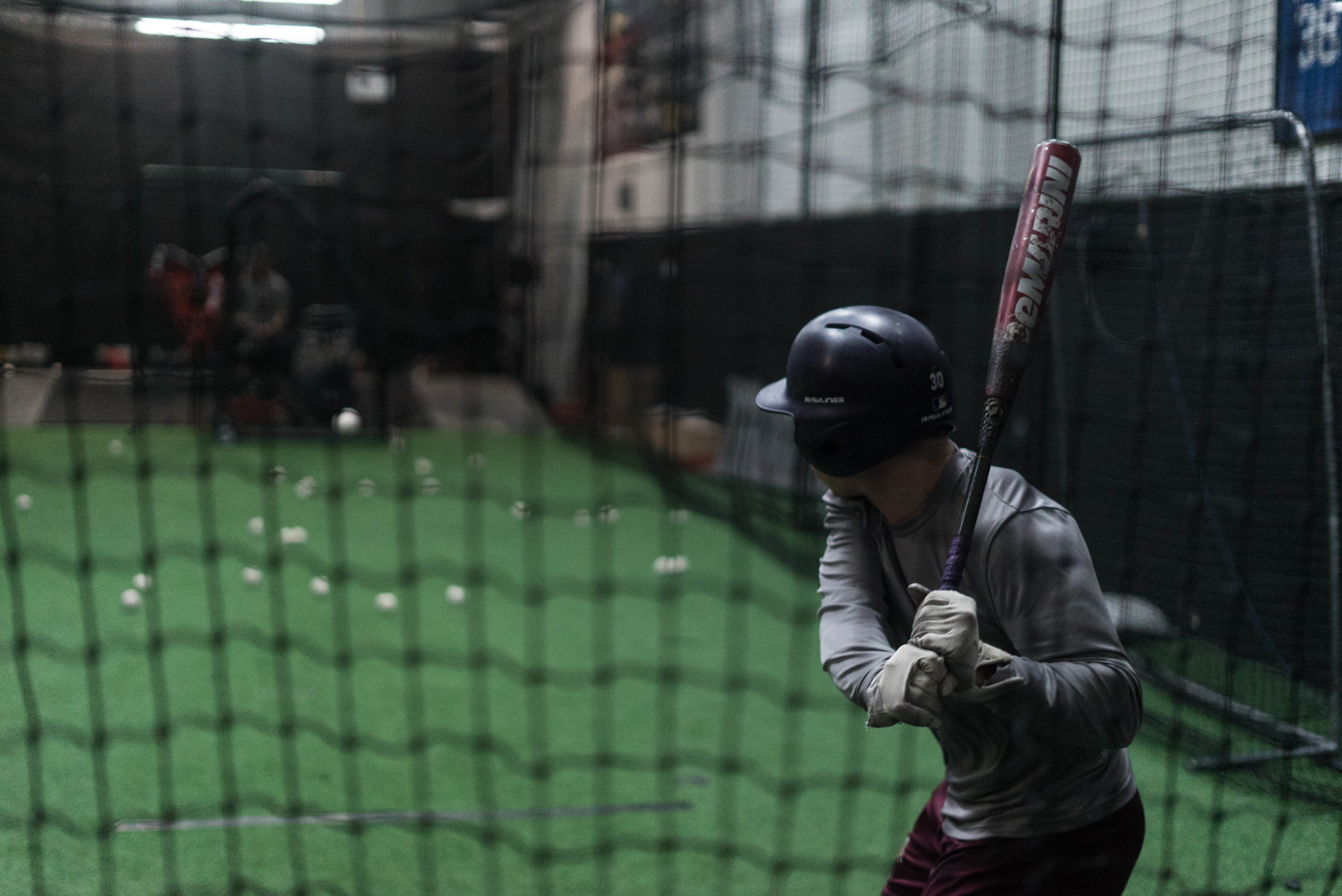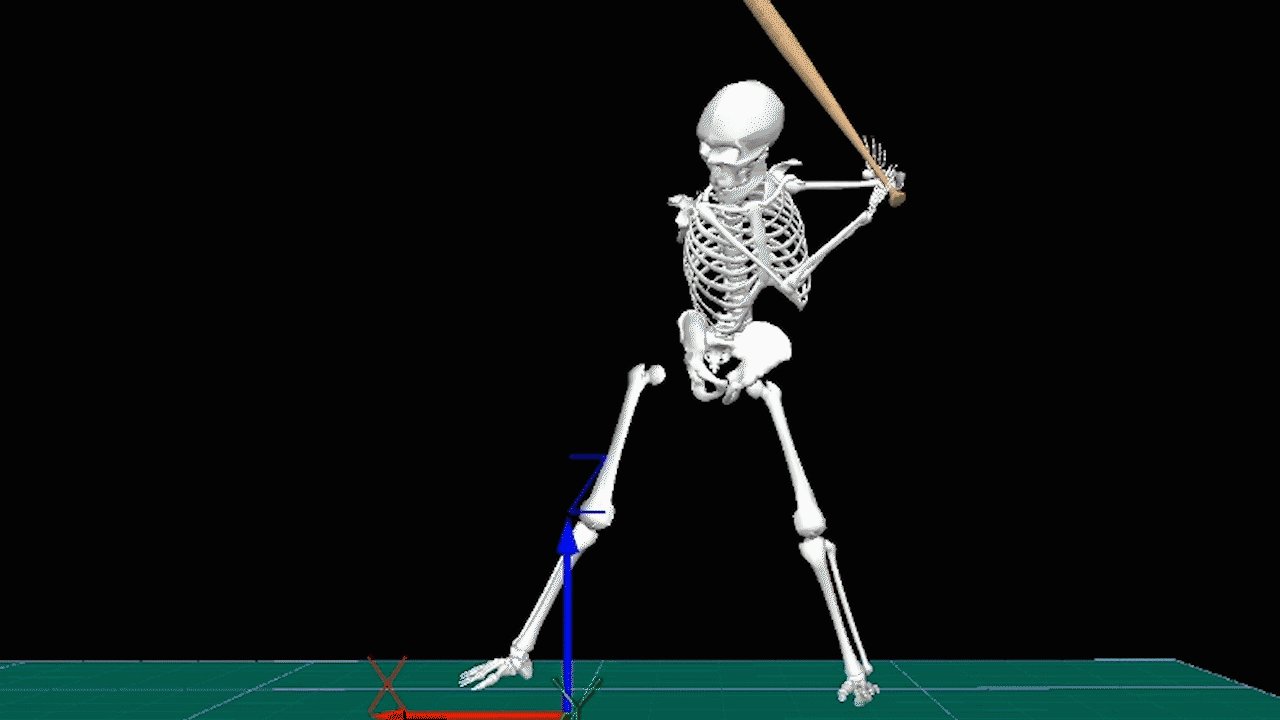Individualized Programming for Youth Hitters

Every hitter moves differently, depending on that hitter’s individual stability, strength, and mobility capabilities. We know that youth athletes have a limited window to developing rotational speed and power, per Dr. Greg Rose, and building that engine should be the main emphasis in a youth hitter’s training and development. Training young hitters to move fast, swing with intent, and hit the ball as hard as possible will clean up a lot of different movement patterns and inefficiencies. That being said, there are still opportunities to leverage certain constraint drills within the athlete’s training program to foster a faster adoption rate of skill acquisition and to help improve each hitter’s movement quality.

Foundations of Hitting
30 modules teaching you everything we know about hitting and hitting mechanics.
So, at what point does a coach strike the proper balance between keeping a young athlete’s workouts fun and productive and allowing the athlete exploratory training and repetitions, but also addressing any glaring inefficiencies he may see in each athlete’s individual movements? Yipping a kid up with internal cues and PVC pipe drills is not fun for the athlete, nor does it teach intent, nor does it develop the aforementioned rotational speed and power.
In this article we look at four different youth hitters that have trained in Driveline’s Youth Training Sessions and examine how a program that combines moving fast and “building the engine” can also be individualized to address the specific swing characteristics each hitter possesses while still keeping the athlete’s programming relatively simple.
The following four athletes are all middle-school aged youths getting ready for their spring seasons. All have good bat-to-ball skills and have been on All-Star teams in the past. Let’s assume they all lack strength and stability, (as most 12-14 year old youths do) but are all considered good athletes relative to their ages. Below are the Blast metrics for each hitter:
Athlete A

Athlete B

Athlete 1

Athlete 2

Based on these Blast metrics, we see that Athlete A and Athlete B both struggle to reach peak rotational speed until very late in their swings, as shown by the sub 8.0 rotational acceleration scores each possess; i.e., neither one of them rotates very well and will both likely struggle to achieve high EV at deeper points of contact.
We can also see that Athlete 1 and Athlete 2 both have laughably high attack angles, particularly for the bat speed and exit velocity capabilities each of them possesses. Both Athlete 1 and Athlete 2 are moving the bat much too “uphill” at impact with the ball, likely causing them not only to topspin a high amount of their batted balls but also to struggle with pitches in the top third of the strike zone.
Based on these metrics, tailoring individualized programs for each athlete is not difficult nor too technical. Giving each athlete a specific external task to accomplish during training with possible specific constraints is a good opportunity to simultaneously train the moving fast and “building the engine” model while still putting each athlete in an environment specifically tailored to foster improved movement patterns based around the individual athlete’s swing characteristics.
We’ll bin these athletes into two groups: rotation focus and attack angle focus. Below are two sample programming guidelines designed to address each movement deficiency while still allowing the athletes to train with intent while still putting each hitter in a challenging position to execute an external goal that will help improve movement patterns:
Rotation Focus:
- Med Ball side toss – 1 set of 8, each side
- Offset closed rope ball swings into Plyo Ball ®wall – 1 set of 8, each side
- Tee – shuffle swings w/ barrel overloaded bat – 1 set of 12 swings
- Tee – offset closed w/ handle overloaded bat – 1 set of 12 swings
- Tee – hook’em short bat – pull side gap – 1 set of 12 swings
- Front Toss – short bat, top hand – pull side gap – 1 set of 12 swings
- Front Toss – shuffle swings w/ barrel overloaded bat – 1 set of 12 swings
- Front Toss – offset closed w/ handle overloaded bat – 1 set of 12 swings
- Front Toss – underload home run derby – 1 set of 12 swings
- Live/Machine Work – inside pitch, pull-side emphasis
For this program, specific constraint drills like offset-closed and top-hand only swings versus inside pitches will put Athlete A and Athlete B in specific positions to force their bodies to “over-rotate” (relative to how much they’re currently rotating) in order to achieve the goal of hitting the ball hard, which still remains the main cue. Having these athletes work exclusively on hitting the inside pitch to the pull side with authority should theoretically help them improve their rotational speed and power capabilities.
Attack-Angle Focus:
Note: Normally attack-angle (AA) focus means taking an athlete’s attack angle that is negative (swinging down) and improving it into the positive range. With these two athletes, their AA are far too high and need to be shaved down to between 5 and 10 degrees (based on their EV capabilities).
- Med Ball side toss – 1 set of 8, each side
- Rope ball swings into Plyo Ball ® wall – target at chest level – 1 set of 8, each side
- Tee – High Tee w/ barrel overloaded bat – 1 set of 12 swings
- Tee – Beltre Drill w/ barrel overloaded bat – 1 set of 12 swings
- Tee – High Tee w/ long bat from shoulder – 1 set of 12 swings
- Front Toss – overhand, short bat, top hand, top of zone, opposite field gap – 1 set of 12 swings
- Front Toss – overhand, Plyo Ball ®, top of zone, w/ barrel overloaded bat – 1 set of 12 swings
- Front Toss – overhand, velo, top of zone, underload bat to CF – 1 set of 12 swings – LA between 5-15 degrees
- Front Toss – overhand, velo, top of zone, game bat to CF – 1 set of 12 swings – LA between 5-15 degrees
- Live/Machine Work – velocity in the top third of the strike zone – CF emphasis
For Athlete 1 and Athlete 2, specific constraint drills like short-bat top hand, Beltre drill, and overhand front toss, with Plyo Ball ®, at the top of the strike zone will force their bodies to move the bat through space on a flatter plane to be able to execute flush contact with that specific pitch.
For youth hitters, moving fast, swinging with intent, and developing rotational speed and power should be the emphasis for the majority of their hitting training. However, if you are looking to challenge your youth athletes with tasks designed to expose movement holes or flaws by using specific constraints and external cues, creating simple and individualized programming for each hitter is a good way to implement new training stimuli into a youth athlete’s routine.
Train at Driveline
Interested in training with us? Both in-gym and remote options are available!
- Athlete Questionnaire: Fill out with this link
- Email: support@drivelinebaseball.com
- Phone: 425-523-4030
Written by Hitting Trainer Collin Hetzler
Comment section
Add a Comment
You must be logged in to post a comment.
Chris -
Great article and timely for me working with some kids in a similar age range. What types of bat are they swinging in the examples above (BBCOR, Drop 5, Drop 10)? Its relevant to the power factor and im guessing that these guys are swinging drop 5 at the lightest.
devenmorgan -
All of the athlete’s mentioned here were swinging -3’s – either 31/28 or 32/29. Thanks for reading!
Michael -
Where can we find more details on the “Beltre Drill” (going to a knee during / after swing?) and the “High Tee w/ long bat from shoulder” (does the bat leave the shoulder or intended to stay there?).
Great work as always. Thank you.
Driveline Baseball -
Michael- The “Beltre Drill” is exactly what you are thinking. You continue to a knee after the swing. It is intended for lower half engagement and prevents an athlete from continually leaking forward with the lower half. The long bat from the shoulder is a drill used for sequencing issues. Keeping the bat on the shoulder (side of the shoulder if more comfortable) as you initiate the swing keeps the arms from taking over. This drill is meant to help the athlete feel the shoulders deliver the barrel later in the sequence, after the hips and torso.
Tanner Holt -
What size med ball would you recommend for middle school and for varsity level?
Driveline Baseball -
You can progress the side toss med ball throws from 4lb up to 8lb for that age group. We’d recommend 4-6lbs for your younger athletes and 6-8lbs for your more developed athletes.